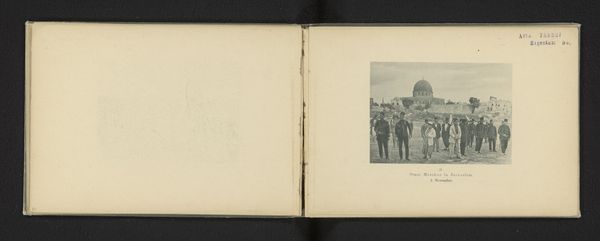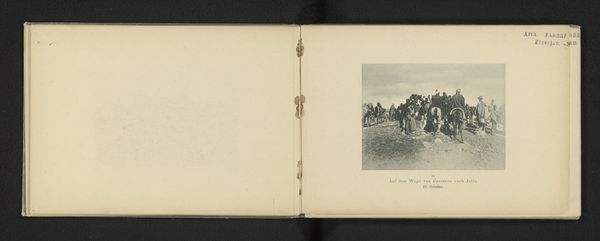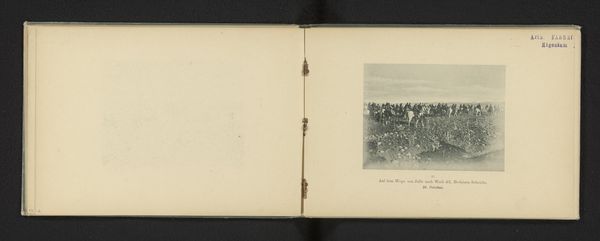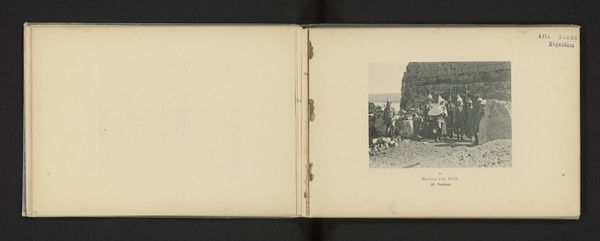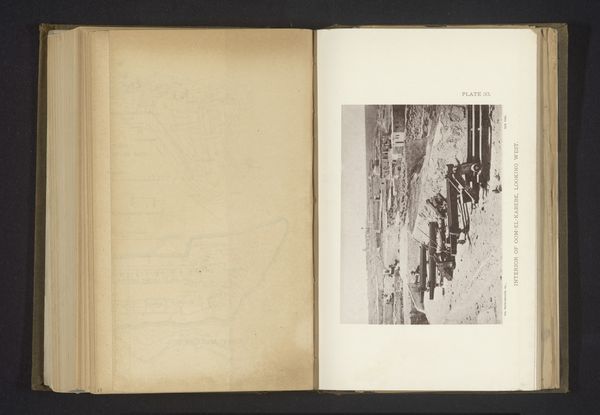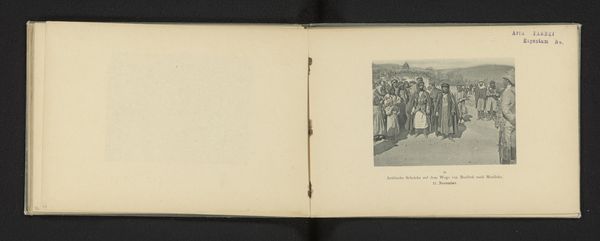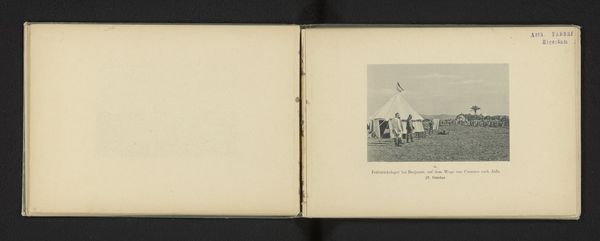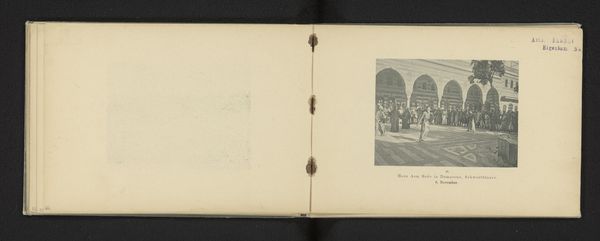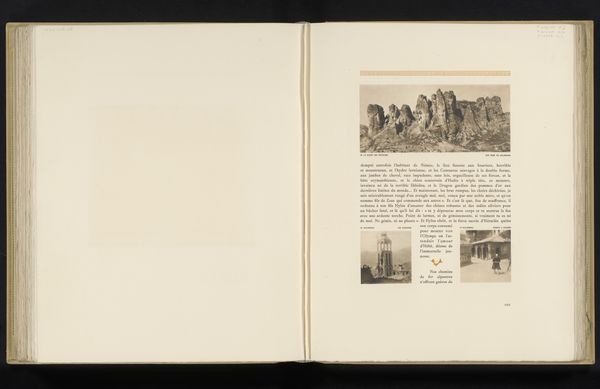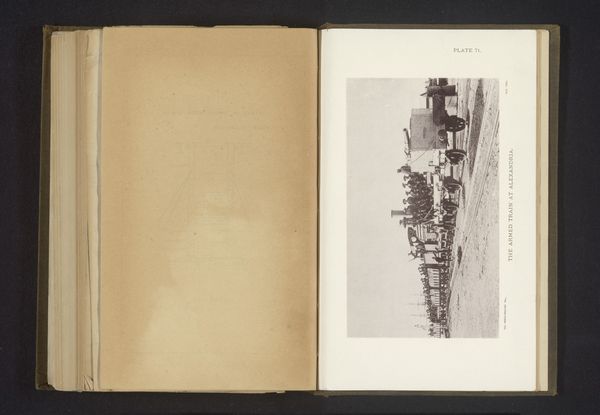
Kamp van het reisgezelschap van keizer Wilhelm II van Duitsland in Jeruzalem, Israël before 1899
0:00
0:00
#
paper non-digital material
#
paperlike
#
personal journal design
#
thick font
#
publication mockup
#
delicate typography
#
paper medium
#
thin font
#
design on paper
#
small font
Dimensions: height 90 mm, width 119 mm
Copyright: Rijks Museum: Open Domain
Curator: This page, seemingly plucked from a photo album, depicts "Kamp van het reisgezelschap van keizer Wilhelm II van Duitsland in Jeruzalem, Israël," dated to before 1899. A fascinating, candid shot from a historical journey. Editor: The immediate impression I get is of a stilled moment in time, an empire holding its breath perhaps? The monochromatic palette lends itself to the somber, official feel. Curator: Indeed. Understanding the social and institutional backdrop here is crucial. Wilhelm II's trip to Jerusalem was a heavily orchestrated performance of imperial power and religious significance, an attempt to bolster German influence in the region. This photograph is likely a carefully chosen, carefully framed depiction within that narrative. Editor: It’s intriguing to consider the politics of imagery at play. Who chose to record this specific camp scene? The arrangement of figures is no doubt intentional; bodies posed to represent authority, order, and superiority. One also wonders about what, and who, falls outside the frame. Curator: Absolutely. The composition also begs the question of whose gaze it was created for, primarily. Was it intended for public consumption within Germany, solidifying national pride and colonial aspirations, or was it meant for a more private audience? How might this impact its reading? Editor: Given the Kaiser's well-documented, often-troubled relationship with other European powers, did this performative display have implications for European geopolitics as well? It appears designed to demonstrate both power and a specific kind of religious authority. Curator: Undoubtedly. Think also about the indigenous populations—invisible in the image but heavily impacted by these displays. Acknowledging that absence becomes critical when grappling with the politics inherent in this historical moment. Editor: Examining such seemingly innocuous images lets us confront a very unsettling truth – empires write and illustrate their own stories, omitting uncomfortable truths that shape more complicated accounts of their global exploits. Curator: A poignant reminder of art’s inherent connection to broader socio-political dynamics, urging us to view even seemingly straightforward documentation as imbued with power and potential agendas. Editor: Precisely. Each image functions like a tiny key, capable of unlocking greater awareness of how history, identity and artistic representations interweave, both then and now.
Comments
No comments
Be the first to comment and join the conversation on the ultimate creative platform.
